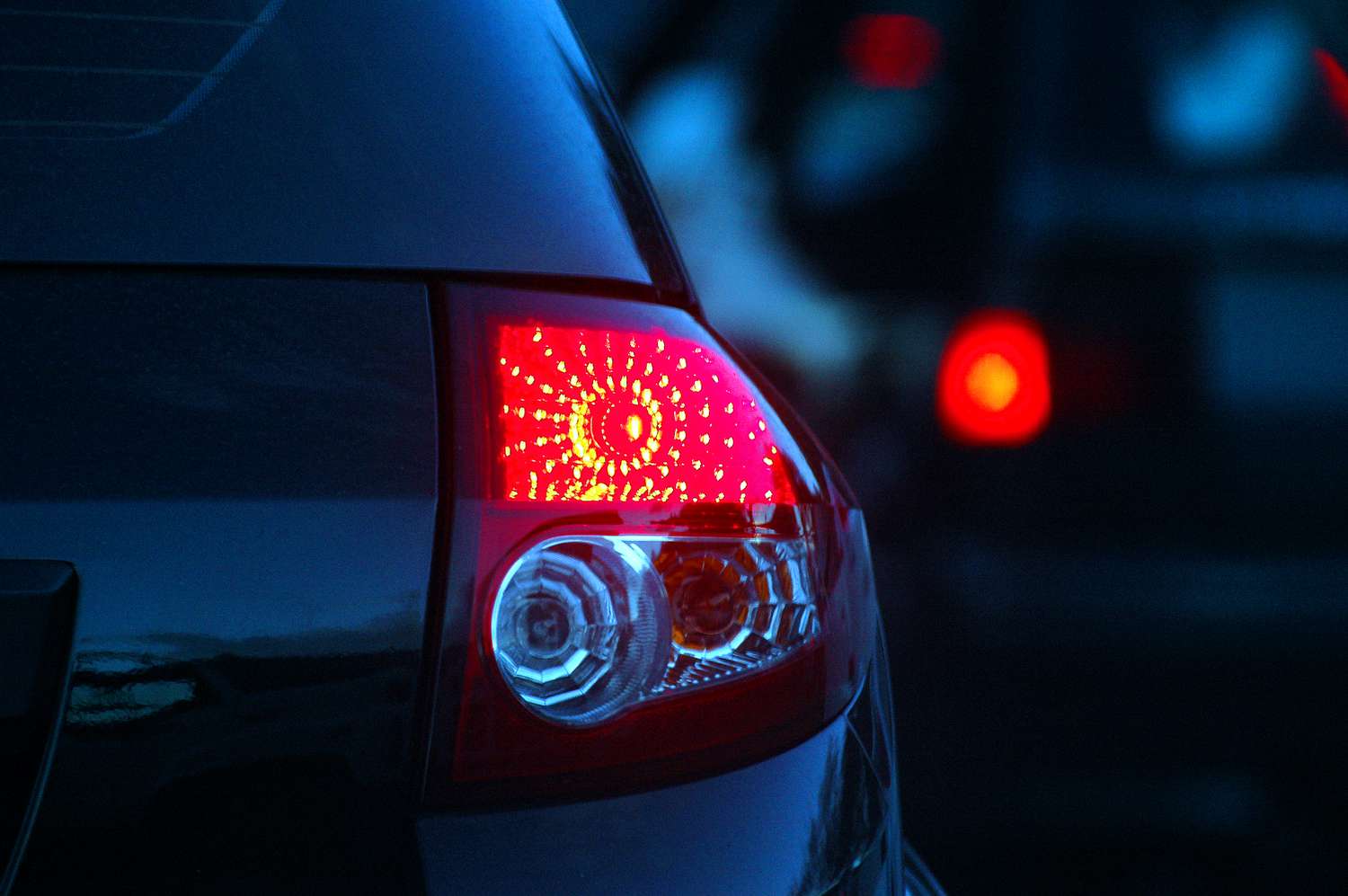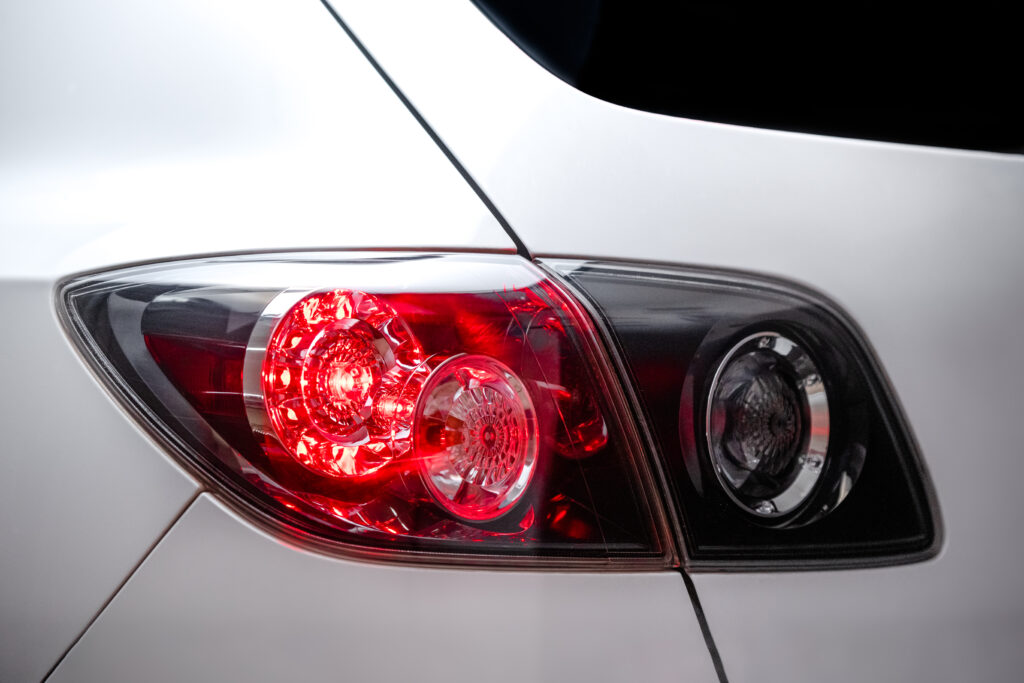Introduction of Brake Lights
A. Overview of the Issue
When your brake lights stay on even when the car is off, it indicates a potential malfunction within the vehicle’s brake light system. This issue is concerning as it can lead to safety hazards, electrical system strain, and battery drainage, presenting a need for immediate attention to rectify the problem.
B. Significance of Prompt Resolution
Addressing the issue promptly is crucial to ensure that the vehicle functions properly, to prevent battery drain, extend the longevity of the electrical system, and maintain road safety for both the driver and other road users.

Causes of Brake Lights Staying On
A. Faulty Brake Light Switch
A malfunctioning brake light switch is a common culprit for the issue of brake lights staying on when the car is off. The brake light switch is designed to activate the brake lights when the pedal is pressed and disengage them when the pedal is released. A defect in this switch can lead to continuous illumination of the brake lights, even with the pedal at rest.
B. Hydraulics and Pedal Positioning
Sometimes, issues related to the positioning of the brake pedal or hydraulic faults within the brake system can also cause the brake lights to remain lit after the vehicle is turned off. These issues could involve the pedal not returning to its resting position or can be attributed to complications within the hydraulic brake system, such as proportional valve malfunctions.

Implications and Safety Concerns
A. Battery Drain and Electrical Issues
Prolonged illumination of the brake lights can lead to battery drainage, potentially resulting in difficulties starting the vehicle and requiring frequent jump-starts. Additionally, the continuous engagement of the electrical system can strain the vehicle’s electrical components, potentially leading to premature wear and affect other systems of the vehicle.
B. Hazards on the Road
The concern with brake lights staying on extends to road safety. Continuous illumination can mislead other motorists as they may interpret it as a signal for braking, potentially leading to rear-end collisions or other traffic-related incident.
Diagnosing and Troubleshooting
A. Visual Inspection and Testing
Conducting a visual inspection of the brake light switch, the brake pedal positioning, and the hydraulic brake system can provide insight into the cause of the problem. Additionally, electrical testing may be necessary to identify any wiring or electrical faults contributing to the issue.
B. Professional Evaluation
Seeking professional assistance for a comprehensive evaluation of the brake light system is essential, especially when the issue’s cause is not immediately evident. Professional technicians can perform in-depth diagnostics to identify and rectify the root cause of the problem.

Resolving Brake Lights Staying On
A. Repairing or Replacing the Brake Light Switch
Addressing a malfunctioning brake light switch involves repairing or replacing the faulty component. This process aims to restore the switch’s ability to activate the brake lights when the pedal is pressed and disengage them when the pedal is released.
B. Addressing Hydraulics and Pedal Mechanisms
Professionals can also address brake pedal positioning faults, hydraulic system issues, or proportional valve malfunctions, ensuring that the pedal returns to its resting position upon release and the brake lights disengage as intended.
Preventive Maintenance and Safety Tips
A. Regular Brake System Inspections
Periodic inspections and maintenance of the vehicle’s brake system are essential for preventing issues that may lead to brake lights staying on when the car is off. Regular inspections can help detect and address potential problems before they escalate into safety and functionality concerns.
B. Road Safety Awareness
Promoting road safety awareness is crucial. Drivers should be mindful of the potential implications and safety hazards associated with malfunctions in the vehicle’s brake light system. Encouraging proactive resolution and adherence to safe driving habits can contribute to road safety for all road users.

Potential DIY Solutions and Temporary Fixes
A. Adjusting the Brake Light Switch
Some cases of brake lights staying on when the car is off can be attributed to misaligned or improperly positioned brake light switches. Drivers may attempt to adjust the position of the switch to ensure proper engagement and disengagement of the brake lights. However, caution should be exercised, and professional guidance sought when attempting such adjustments.
B. Checking and Rectifying Pedal Positioning
Drivers can inspect the brake pedal’s resting position and movement to ensure it returns to the resting position without obstruction. If obstructed or misaligned, adjustments may be made to rectify the pedal’s positioning, potentially resolving the issue of constant brake light illumination.
Addressing Wiring and Electrical Connections
A. Examination of Wiring and Connectors
Frequently, brake light issues may stem from faulty wiring or electrical connections, leading to unintended signal activation. Drivers may inspect the wiring and connectors related to the brake light system and address any loose connections, frayed wiring, or signs of damage that may be contributing to continuous brake light operation.
B. Professional Wiring and Electrical Inspection
When electrical faults are suspected, seeking professional assistance for an extensive inspection of the brake light wiring and electrical connections is advisable. Expert technicians can conduct thorough diagnostics, identify faulty components, and rectify wiring or electrical issues causing the brake lights to remain on when the vehicle is off.

Leveraging Modern Diagnostic Tools and Techniques
A. Utilization of Diagnostic Scanners and Tools
Modern vehicles are equipped with diagnostic capabilities, allowing technicians to utilize scanning tools to identify fault codes and assess the brake light system’s operation. By leveraging these tools, technicians can pinpoint specific electrical, sensor, or system faults contributing to continuous brake light illumination.
B. Advanced Troubleshooting Methods
In instances where traditional diagnostics may not immediately reveal the root cause, advanced troubleshooting methods, such as circuit testing, voltage analysis, and sensor monitoring, may be employed. These techniques aim to provide a comprehensive understanding of the brake light system’s functioning, facilitating accurate diagnosis and targeted repairs.
By incorporating these additional sections into the outline, readers can gain a more comprehensive understanding of potential DIY approaches, electrical system evaluations, and modern diagnostic methods for addressing the issue of brake lights staying on when the car is off.
Conclusion
A. Recap of the Importance of Resolving the Issue
Promptly diagnosing and resolving the issue of brake lights staying on when the car is off is essential for ensuring vehicle safety, maintaining the integrity of the electrical system, and promoting overall functional efficiency. Addressing the issue not only mitigates safety and operational concerns but also contributes to a safer and more reliable driving experience.
Leave a Reply